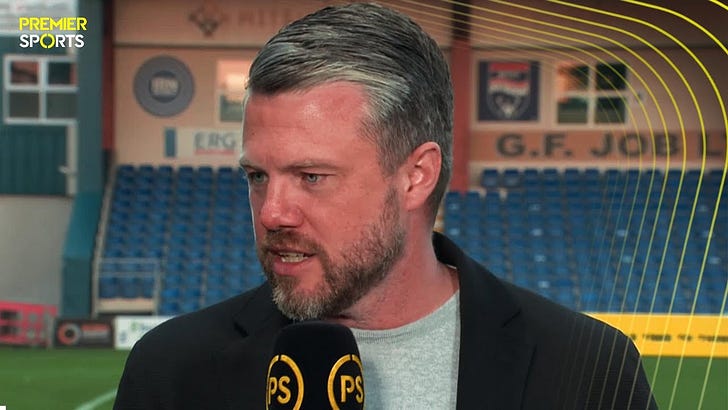Recently on the radio I heard Michael Stewart say that it was clear from day one what Jimmy Thelin was trying to do. He’s not the only one who has expressed admiration for Aberdeen’s new style of play. Thelin has been given much praise, rightly so, but can we really say that there is a clear and defined way of playing at Aberdeen currently?
Even though we are in the post-Pep Guardiola age of football, it’s not to say whether it is a good thing to be wedded to a particular style (see Glass, Stephen) or formation (see Robson, Barry). We have seen some signs from Thelin so far but different games have created different scenarios and I would only expect that to continue.
It is better to be really good in some parts instead of growing all over the place and it is not so clear.
Jimmy Thelin
Thelin’s recent quotes (sourced from the P&J) seem to acknowledge the presence of the opposition as an important component of his approach.
“We can find different ways to attack if the opponents play in a low block, medium block or high block…If they press us or don’t press us then it is going to be different. That is every team, every week and with the type of players they have. You also have an opponent on the other side who is also doing their thing and that will also dictate the ball possession.It will be different in every game.”
In light of this, what are the elements of the Aberdeen approach we have seen consistently during Thelin’s tenure so far?
Shape: This is not 100% true as there have been 4-4-2s deployed, but at least as a base, we’re looking at a 4-2-3-1. Without trying to split hairs, the positioning of the wide players is not high enough or wide enough for to say it’s a 4-3-3.
Balance: Perhaps it’s years of watching football (or awful memories of last season) that creates a familiarity but a back four just seems to provide more balance. Additionally we have a strong spine of keeper and two centre backs and a solid central midfield in Shinnie and Nilsen. Right footed and left footed partnerships have been preferred in both those areas, although, interestingly the midfielders typically play on opposite sides.
Pressing: Mid-to-high block. The Dons have certainly pressed high but under the right triggers and they haven’t held an aggressive defensive line. The central shape seems to be a 4-4-2 with the #10 joining in with the centre-forward and a narrow midfield four in behind. There is consistency in implementation although within games Jimmy has turned the dial. See the second half against St. Mirren when the intensity of the press became higher.
Winning the ball back in the opposing half. The Dons rank 2nd (behind Rangers) in ‘Possession won final 3rd per match’ with a score of 4.5 regains per match. Five out of Aberdeen’s six goals have come from winning the ball back in the opposition half, with an average of 3.6 passes prior to the goal.
Fluidity in the attacking three: Jamie McGrath is the obvious example here. On paper he is playing wide on the left but this is not an Irish Ryan Giggs heading to the byline and whipping in crosses. Nor is he an inverted winger in the mould of Arjen Robben, dipping in onto his favoured foot. No, McGrath does the majority work in what in certain circles may be termed the ‘half-spaces’. He could be considered a second #10 drifting inside and getting into areas that defenders don’t like to venture. His technical ability to dribble, shoot, pass and cross makes him a very dangerous opponent in these spaces as his numbers have proven this year.
Shayden Morris was deployed largely as an out an out winger, but the arrival of Keskinen has seen the Finn replicate some of McGrath’s movements although he seems to venture a little higher into the centre-forward area.
High full-backs: McGrath’s buddy has been Jack Mackenzie and the space that McGrath has left has been voraciously consumed by the ‘young’ left back. Recent weeks have also seen Nicky Devlin getting forward on the opposite side. Having the full backs deliver the cross allows for more bodies in the box, aiding in Thelin’s overloads in the box philosophy.
Conclusion
“It is more about repeat and improve rather than adding a lot of things,” said Thelin. “Then when we have that we can add more things to our game.”
In a short space of time, Thelin has established some clear components to the Aberdeen tactics. Over the coming months I think we can expect the pressing to become even more refined, especially as Aberdeen play teams likely to have more of the ball.
The movements ahead of the play in the final third are very interesting and it will be exciting to see how Leighton Clarkson factors into that. I’ve written previously about the Dons establishing some initial patterns to build out of the back and again, we shall see if that becomes a more consistent part of the build up.




